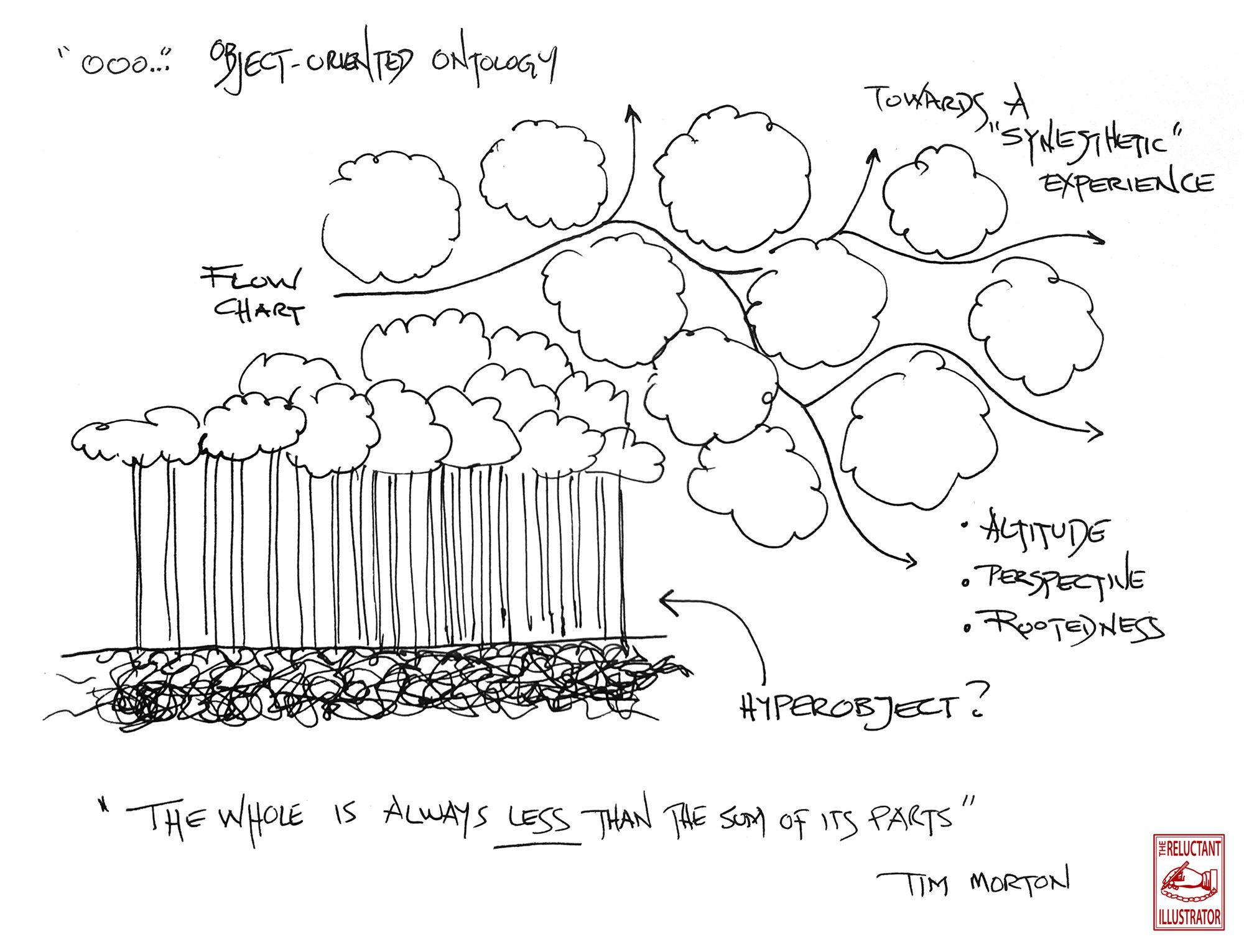forests

The forest is less than the sum of its parts.

...and sometimes the path is the undergrowth.
The drawing came from a wandering conversation about a synesthetic experience - how to create a different experience using music, words, images, and references to conjure a more complex and engaging story – the combining of forms of expression for a deeper experience.
The metaphor of not being able to see the forest for the trees – by getting caught up in the complexity of the toolsets for producing and disseminating creative work – and finding ways of gaining altitude as a way to see the path, seemed important in bringing complex creative work to an audience.
The discussion reminded me of some illustrations made a while ago about engaging the whole forest - Altitude, Immersion, and Groundwork.

Timothy Morton also came to mind with his notion of Hyperobjects "...objects that are so massively distributed in time and space as to transcend spatiotemporal specificity.” In other words, objects that remain invisible, because they are too massive to fully comprehend. Morton's use of the term Hyperobjects was inspired by Björk's 1996 single 'Hyperballad' – what more needs to be said?
Morton suggests that our commonly accepted perspective: “the whole is greater than the sum of its parts” is entirely wrong-headed and the correct interpretation is the opposite “The whole is always less than the sum of its parts” -subscendence.
This makes sense. Complexity resolves itself at scale when the process of reduction starts to take place. It's an interesting reframe and I believe it is also true going in the opposite direction of scale - as things get smaller and smaller.
For anyone into a deeper dive into this wonderland of a contemporary philosopher's mind – and has an hour for a hyper-bending dialogue - or watches @2x - here's Timothy Morton in Conversation with Verso...


Member discussion